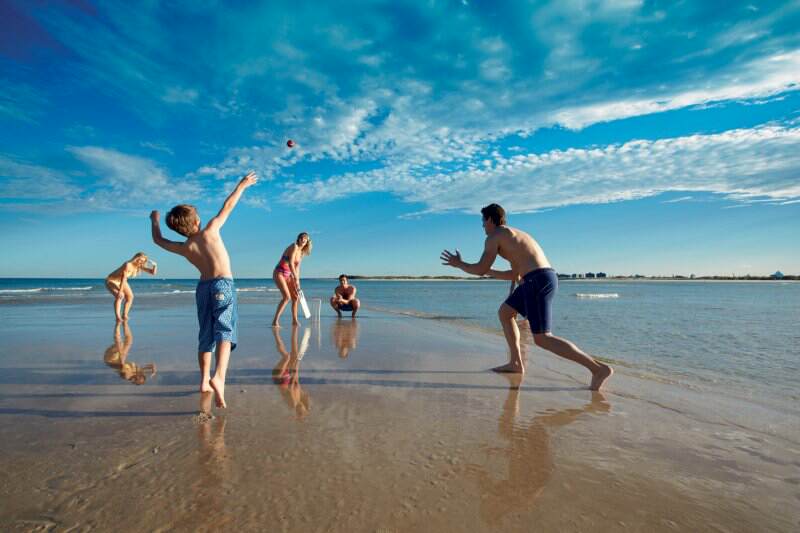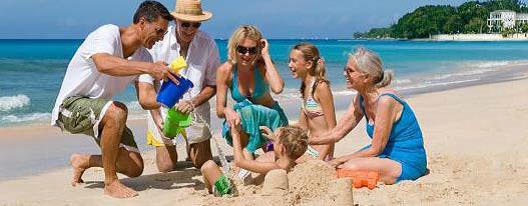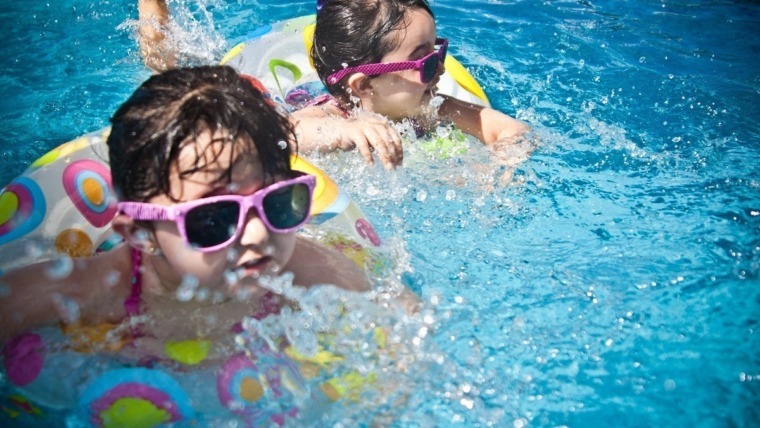
Written by Clint Bauer
Working with children on a regular basis and often spending time with my niece and nephews, what I find energises them the most (and us!) is spending time in nature.
Why is nature good for family fitness and getting active? (Get more energised)
For one… it’s free to use! That’s a pretty good reason right there!
Also, it’s easily accessible. Everyone has access to nature in some capacity, whether it be a playground or park in the local neighbourhood, to strips of beaches or forests nearby to visit.
The openness of nature spaces allows for opportunities for enjoying many different games and activities that indoor environments generally don’t.
Spending time in nature has been scientifically proven to help improve our health not just physically in terms of fitness, but also by reducing stress, improving mental clarity and function, and general wellbeing.
People who spend time in nature are more likely to appreciate, respect and want to look after it. The world needs more eco-warriors!
What are the benefits for kids and adults being active outdoors?
The great thing about nature is it’s always changing. No two days are ever the same in a nature space. The weather conditions change, the temperature changes, surfaces change, landscapes change, the wildlife is always different… all providing new stimuli for us and therefore helping create resilience, improve adaptability and promote joy and learning opportunities. This is energising both physically and mentally because there are always new ways for the body to move, and the brain is always having to think about the changing environment and how to cope with that. Compared to indoor environments, such as the gym, that only offers a controlled environment and situation.
How can you use nature to energise your family? (Get more energised)
Move away from the idea of simply taking your indoor fitness routine outdoors. For your family to get the maximum benefit from nature for better health and fitness, it’s important to expand your current view and ideas of what fitness in nature looks like.
Instead of an outdoor bootcamp, for example, with crunches, burpees, sprints etc, try a more natural approach such as bushwalking, climbing, swimming, wildlife spotting… more like the movements and activities humans did long before ‘exercising’ was invented.
By getting back to more natural and ‘human’ games and activities, the whole family can better connect with nature, themselves, each other and have more fun!

Here are some examples of games and activities you can try (Get more energised)
The Lava Game: Most people are familiar with this one but if it’s new to you here’s how to play…
Simply designate a space that has objects you can get onto (eg the playground equipment at the park) and remember that the ground is lava! You all start on the ground until someone shouts “lava!” and you all have three seconds to race to an object to get onto so you’re no longer touching the lava. Stay there for five seconds then go again but find a different location/object.
Some of the benefits of this game include improved speed, agility, mobility, strength, cardio fitness, lateral and creative thinking, and is sure to get everyone laughing!
Stuck in the Mud: This game is best played with three or more people on an open grassy spot or on sand. (Get more energised)
Set a boundary to not be allowed outside of (eg nearby trees as markers). Allocate one person to be ‘it’. When the game starts everyone else has to run away from them, while the person up is running around trying to tag individuals. When someone is tagged they have to stand still in that spot, with their feet apart and wait for someone else to come along and crawl between their legs to free them up and get back to running away from the ‘it’ person. If someone is too tall or big to crawl under, just a simple tap on the back will do.
The person who’s ‘it’ is trying to get everyone else stuck, but the game may stop before then when everyone is puffed and needs a break!
It’s fun for all ages and gets the fitness up pretty quickly because there’s a lot of running, stopping, starting, and crawling.
Bull in the Ring: This game can be a little rough, so it’s best played on sand. (Get more energised)
First draw or mark a large circle (just with your foot) as the ‘ring’ where the battle will commence! Everyone stands inside the ring and when someone says “go” you all try to push each other outside of the ring so one person is left inside and is the winner. Use common sense and avoid really rough physical manoeuvres like head butting, but get creative with ways to outsmart your opponents, some of whom may be taller, shorter, larger etc than you.
This game is great for improving cognitive function by encouraging more in-depth thought processes and problem-solving ability, as well as improving general strength, fitness, spatial awareness and mobility. Everyone will be laughing and getting pretty puffed pretty quickly!
These games are suitable for any fitness and age level, and can teach different family members how to be more empathetic and thoughtful towards other members of the family. For example, a stronger older sibling may need to adjust their behaviour and attitude to allow for a younger and less physically capable sibling to have a fair go in the game. This can help families bond and really enjoy their time together.
Try these games when you’re already out enjoying nature; after a bushwalk, while enjoying a trip to the beach, or while playing at the local park and you’ll realise you can get a whole lot more physical and emotional benefit from utilising nature.



